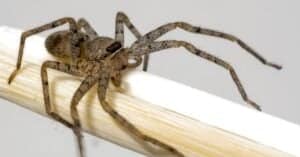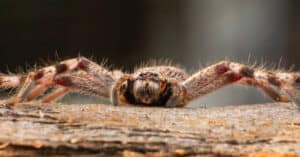Brown recluse spiders are one of the most venomous spiders known to man. The species, which is native to America, is small-sized and grows between 0.24 and 0.79 inches. Although Florida has no native brown recluse spiders, they have been introduced to the state. This article looks at Florida’s brown recluse spiders and where they are found.
Brown Recluse Spiders in Florida
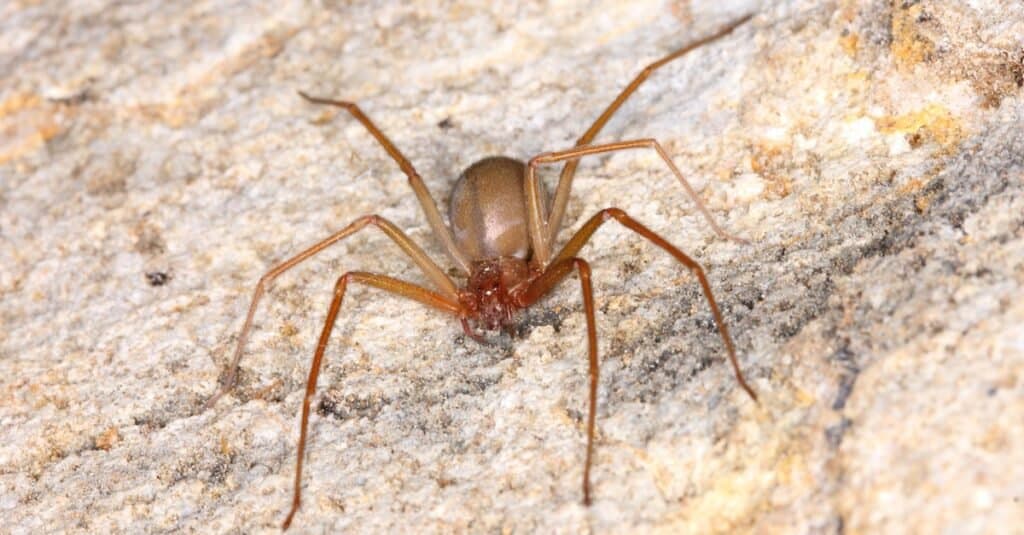
Brown recluse spiders are venomous spiders found in various parts of Florida.
©Pong Wira/Shutterstock.com
Brown recluse spiders in Florida are known to be active from March to October. A shy, furtive nature is the hallmark of the brown recluse. Florida residents might have a brown recluse spider in their homes now- and never even know!
They get into homes by climbing onto furniture when they are being moved and catching rides. It is also easy for brown recluse spiders to stay hidden because they do not eat a lot. They can go for up to ten months without food or water. When they feed, they prefer to go for already-dead insects. This is not because they aren’t capable hunters. These spiders move really fast and have great eyesight. They also have extremely venomous bites.
Female brown recluse spiders lay eggs from May to July. They are known to lay an average of 50 eggs at a go. Each egg is wrapped in a silk sac that is off-white.
How Common Are Brown Recluse Spiders in Florida?
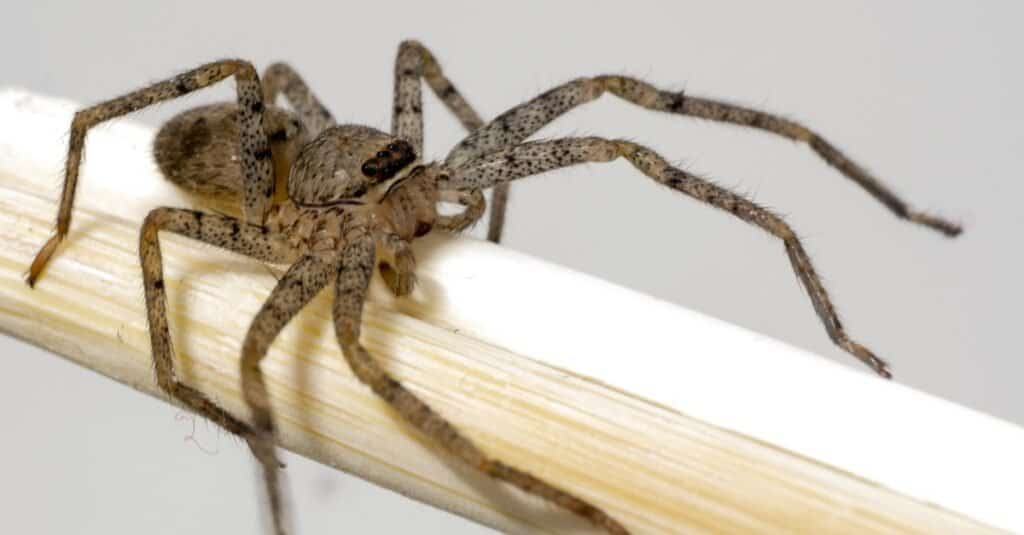
Brown recluses are all over the state of Florida, but they are hardly spotted.
©Physics_joe/Shutterstock.com
Brown recluses are all over the state of Florida, but they are hardly spotted. They seek seclusion and dark, undisturbed places. Indoors, furniture, attics, garages, cellars, basements, crawl spaces, and other small and dark spaces are some of the preferred spots of the brown recluse.
Florida’s outdoors also plays host to them, and they can be found hidden under logs of wood, piles of rocks and stones, and discarded furniture.
Where Are Brown Recluse Spiders in Florida?
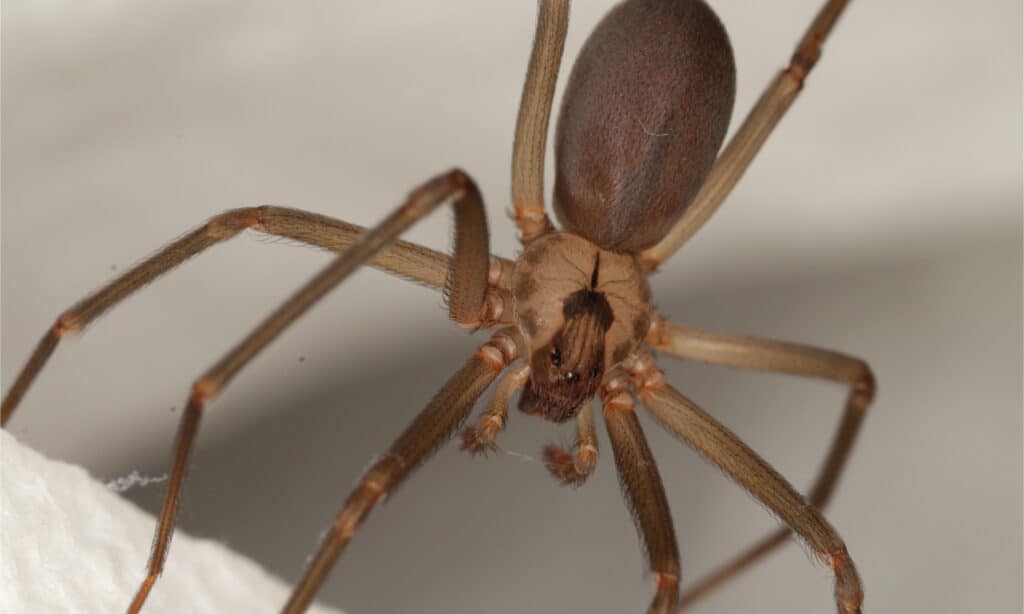
Brown recluse spiders can be found in Florida’s Alachua, Bay, Duval, Jefferson, and Leon counties.
©Nick626/Shutterstock.com
According to the Florida Department of Agriculture & Consumer Services, brown recluse spiders can be seen in large numbers in Florida’s Alachua, Bay, Duval, Jefferson, and Leon counties.
Brown Recluse Spider Webs
Brown recluses are known to build small webs with irregular patterns. They often pick abandoned and dark locations, which hint that their webs aren’t necessarily to catch prey. Research shows that they often stay close to their webs.
Brown Recluse Venom
The brown recluse’s venom is one of the most toxic venoms known to man. It is many times more toxic than snake venom. However, brown recluses inject only tiny amounts of venom due to their size, and they do not inject enough to have severe effects.
Despite the low quantity of venom injected, their bites are known to hurt, and they often result in painful swelling. There is no antivenom for the brown recluse’s venom. The bites often leave scars that take quite a while to heal.
How Dangerous Are Brown Recluse Spiders?
Brown recluse spider bites are even rarer than their sightings. They are not considered dangerous as they hardly ever bite.
Is a Brown Recluse’s Bite Worse Than a Rattlesnake’s bite?
A brown recluse’s bite is more venomous than any rattlesnake’s bite. However, rattlesnakes inject more venom into their bites, so they are more potent.
What to Do if You Get Bitten by A Brown Recluse Spider in Florida?
If you are bitten by a brown recluse spider in Florida, remain calm. If possible, capture the spider safely. Do not kill it. Next, contact emergency services. While other spider bites might not be emergencies, brown recluse bites could be.
What Does a Brown Recluse Spider Bite Look Like?
Brown recluse spiders have peculiar looks. They have violin-shaped markings on their abdomens, with older spiders having darker markings. So this is one way to approximate the age of these spiders. Although most spiders have eight eyes, brown recluses have six. The six eyes are distributed among three equal segments in a row. Their bodies are dark or light tan but can occasionally be deep yellow.
Are Brown Recluse Spiders Aggressive?
Brown recluses aren’t aggressive. They go out of their way to avoid humans, and even when spotted, they hardly bite.
Brown Recluse Bite Statistics in Florida
There hasn’t been a single official record of a death by a brown recluse spider in the state of Florida, as well as the entire United States.
How to Get Rid of Brown Recluse Spiders in Florida
If you spot a brown recluse spider in your Florida home, your action should depend on how many you spot. If you spot only one, use a strong insecticide and spray it directly on the spider. Be sure it is dead before carefully disposing of its corpse. If you happen to spot more than one, contact professional pest control services immediately.
Other Venomous Spider Species in Florida
According to reliable reports, over 50 unique species of spiders have been spotted in Florida. The state is home to only five species of venomous spiders, which are scattered about the state. Let’s take a look at the other four.
- Southern black widow: Southern black widows are often found outdoors in Florida. They are one of the state’s most widespread species and are often found in hidden places such as rocks or logs of wood.
- Northern black widow: Northern black widows are found in the western parts of Tallahassee. They are particularly found in forests as they spin their webs 3 to 20 feet above the ground.
- Red widow: Red widow spiders are found in Florida’s central and southern parts. They favor dunes to build their habitats. Female red widows have venom that contains neurotoxins which causes sustained muscle spasms.
- Brown widow: Known to be less aggressive than black widows, brown widow spiders are often found in the southern parts of Daytona Beach along the coast of Florida. They are known to weave webs in well-lit areas.
The photo featured at the top of this post is © Nick626/Shutterstock.com
Thank you for reading! Have some feedback for us? Contact the AZ Animals editorial team.




